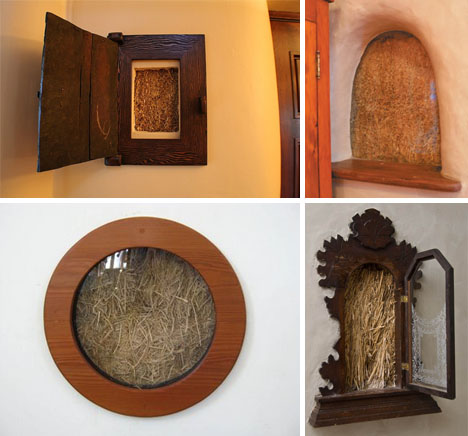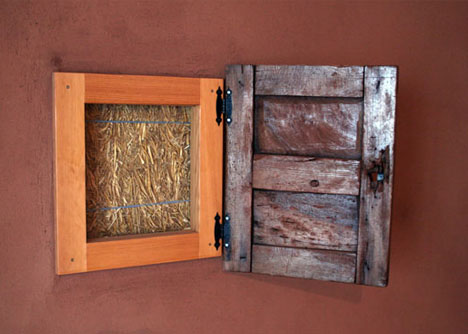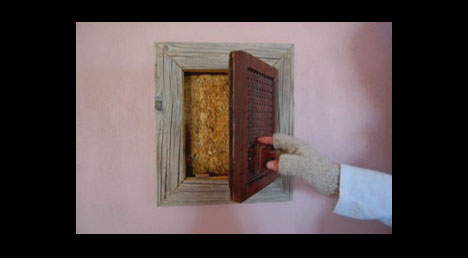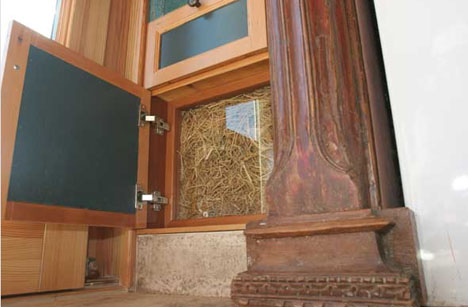Truth Windows Show Hidden Structure of Straw Bale Homes

So-called ‘truth windows’ are part of a weird and wonderful tradition of cutting false windows, ironically enough, into the inside walls of homes. From simple to ornate, these framed openings act like built-in wall decor. But instead of becoming simply additive art, they show off the normally-hidden structure that helps hold your home up, insulate it and let it breathe — the inner anatomy of architecture, as it were.

Truth windows are especially intriguing when they’re used to reveal the natural building materials disguised behind more conventional-looking surfaces, like straw bale or complex timber frames. While most of these inner workings are covered with plaster and therefore invisible, truth windows leave a small section unfinished so we can see what’s inside. Sometimes they’re glassed over or covered with an operable door, giving the unexpected feature an interactive component. Truth windows are a fun way to highlight the elegant simplicity of green building techniques, but they can be incorporated into all different kinds of architecture, from the historic to the modern.

As pointed out over on BldgBlog, this leads to all sorts of interesting project ideas that go beyond quaint rural houses — consider the notion of “installing upside-down periscopes on the sidewalks of vertically dense cities such as New York City, London, Istanbul, or Jerusalem …. allowing everyone to peer down into subterranean infrastructure, exploring subways, cellars, plague pits, crypts, sewers, buried rivers and streams, scanning back and forth through the foundations of missing or war-destroyed buildings, even zeroing in on lost ships.”

Equally neat, though, one could imagine seeing this installed in the sides of skyscrapers and other large-scale urban structures — a kind of ongoing, open-ended educational project that lets pedestrians and visitors on streets and in buildings learn something about the fabric holding their surroundings together.
Images via SolarVillage, BuildingNaturally, and DKS Architecture




